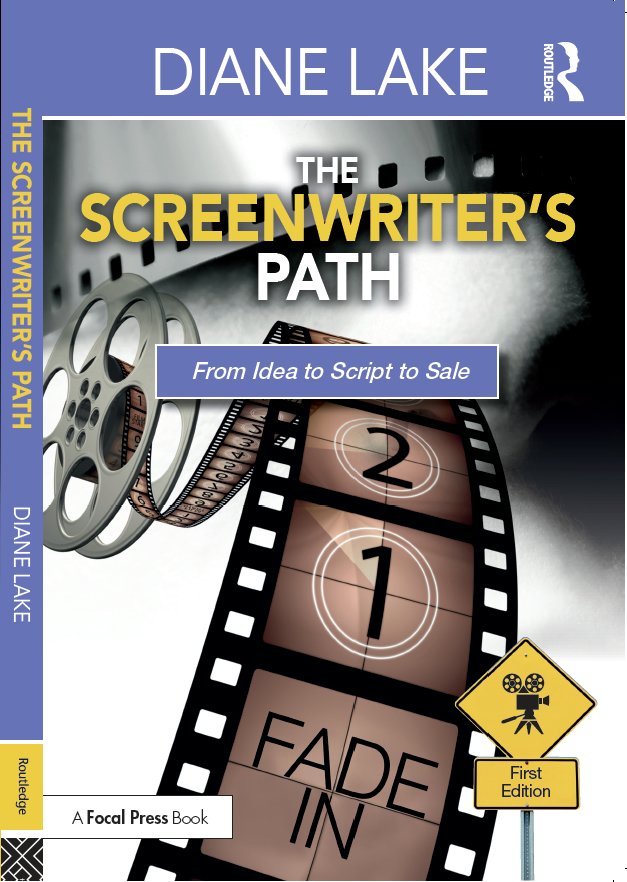
From Idea to Script to Sale




Table of Contents

Part One Taking the First Steps: What You Need to Know to Write a Screenplay
Chapter 1: ORIGINAL OR ADAPTED: WHICH ARE YOU WRITING?
Original Screenplays—What You Probably Want to Write
Adapted Screenplays—What You Should Really Think About Writing
Whichever You Choose, a Story is a Story is a Story
To Theme or Not to Theme
New Media, Webisodes and TV—It’s a New World for the Screenwriter
Chapter 1 Exercises
Chapter 2: CONCEPT
The Big Idea
The Logline
The Premise
Chapter 2 Exercises
Chapter 3: GENRE
What Kind of Movie is this, Anyway?
Understanding the ‘Rules’ of the Top 7 Genres in Film Today
 Comedy
Comedy
 Romantic Comedy
Romantic Comedy
 Action
Action
 Thriller
Thriller
 Horror
Horror
 Sci-Fi
Sci-Fi
 Family
Family
Breaking the ‘Rules’ of the Top 7 Genres in Film Today
Chapter 3 Exercises
Chapter 4: CHARACTER
Whose Story Do You Want to Tell?
Getting to the Heart of Your Main Character
Five Character Questions
 Who Is This Person and What Does He/She Want and Need?
Who Is This Person and What Does He/She Want and Need?
 What Is the Emotional Life of Your Main Character?
What Is the Emotional Life of Your Main Character?
 Why Should I Care About Your Main Character?
Why Should I Care About Your Main Character?
 What Was Your Main Character’s Life Like Before the Story Starts?
What Was Your Main Character’s Life Like Before the Story Starts?
 How Does Your Main Character Talk?
How Does Your Main Character Talk?
Supporting Characters—Please, No Stock Types
 Distinctiveness
Distinctiveness
 Variety
Variety
 Depth
Depth
Chapter 4 Exercises
Chapter 5: CHARACTER/STRUCTURE
Let’s Talk Arcs
Why Character and Structure Aren’t Mutually Exclusive
Using Subplots—a Major Crossroads for Character and Structure
What if the Journey of Your Main Character Mirrors the Trajectory of the Film?
How Understanding this Symbiotic Relationship Can Take You to a Higher Level of Storytelling
Chapter 5 Exercises
Chapter 6: STRUCTURE
Obligatory Thanks to the Greek Guy: How Aristotle Made it All Clear
Act I: Setting Up Your Story and Main Character’s Journey
 The Tyranny of Page One
The Tyranny of Page One
 Writing a Killer First 10 Pages
Writing a Killer First 10 Pages
 Ending with a Bang Up Finish
Ending with a Bang Up Finish
Act II: Taking Your Main Character on a Wild Ride
Act III: Somehow Making the Impossible Possible—Bringing it All Together
The 7 Steps
Page Numbers: Why Nearly All Scripts Are Around 100 Pages
 Seriously? I’m Supposed to Follow Some Cookie-Cutter Formula?!
Seriously? I’m Supposed to Follow Some Cookie-Cutter Formula?!
 Why It Works: The Discipline of Storytelling Construction
Why It Works: The Discipline of Storytelling Construction
 Going Your Own Way: When to Break Ranks with the 7 Steps
Going Your Own Way: When to Break Ranks with the 7 Steps
Pacing and How to Feel It
 What Makes a Story Move
What Makes a Story Move
 Writing Action—More Words Means More Care
Writing Action—More Words Means More Care
Deviating From the Norm: Nonlinear Structure and the Anti-Narrative Film
Chapter 6 Exercises
Chapter 7: DIALOGUE
Writing Good Dialogue: Can It Be Taught?
Working Like Crazy to be Conversational
Why Less is Always More
Saying What’s Not Being Said Says It All
Chapter 7 Exercises
Chapter 8: WRITING THE ADAPTATION
Why Adaptations Are Favored Over Originals in the Industry Today
Public Domain: Stories Free for the Telling
Published Stories: Contacting Authors and Acquiring Options
How to Know What Makes a Good Story for Adaptation
Breaking Down a 400 Page Novel into a 100 Page Screenplay:
A Daunting Task
Sample Option and Shopping Documents
Chapter 8 Exercises
Chapter 9: WHEN TO USE YOUR BAG OF TRICKS
Montages
Flashbacks
Voiceover/Narration
Chapter 9 Exercises
Chapter 10: WHY IT’S THE LITTLE THINGS THAT COUNT
Formatting
Top 7 Things Not to Do in Your Screenplay
Proofreading
Chapter 10 Exercises
Part Two Slogging Away: How to Know if You’re on the Right Track
The Pitch—Every Writer’s Touchstone
The Emotional Story—Make Sure You’re On It
The Element of Surprise—And Why it Makes All the Difference
The Writer’s Life—And How to Live It
 Decide on a Routine that Works
Decide on a Routine that Works
 Everything is Material
Everything is Material
 Form a Writer’s Group and Stay With It
Form a Writer’s Group and Stay With It
 Travel. Seriously. Everywhere.
Travel. Seriously. Everywhere.
PART THREE You’re Done!—So What’s Next?
Rewriting—Hemingway Was Right
Proofreading—Again
Polishing it Until It Shines
Launching it Into the World
 Partying—Yes, This is the First Step
Partying—Yes, This is the First Step
 Getting Your Script Read
Getting Your Script Read
 Finding an Agent
Finding an Agent
 Entering Contests
Entering Contests
 Websites that Can Really Help
Websites that Can Really Help
PART FOUR Knowing Your Business
Understanding the Collaborative Process
Keeping Up with Trends
Knowing the Players
FADE OUT
General Index
Film Index



